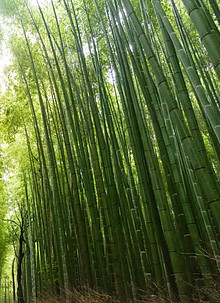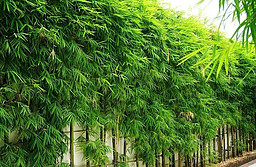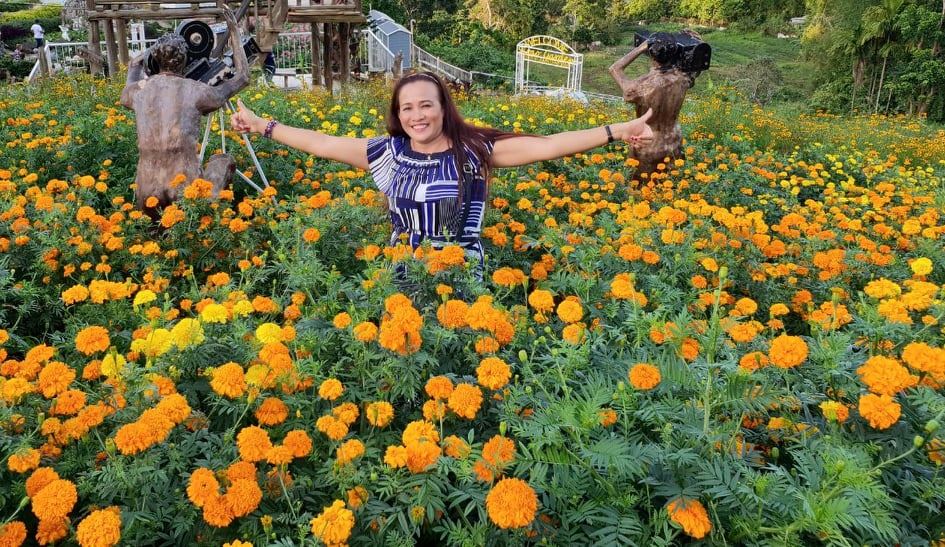 The potential for bamboos to grow very fast is a trait that is both admired and detested by different people. If you are able to get it right with planting a bamboo fence, it could serve as a fence for your yard.
The potential for bamboos to grow very fast is a trait that is both admired and detested by different people. If you are able to get it right with planting a bamboo fence, it could serve as a fence for your yard.
Bamboos are great for making our places of habitation both beautiful and protected from direct sunlight. This guide takes you through the process of planning, planting, and maintaining your bamboo plants.
Method One –Making Plans For Your Bamboo Plant
I – Finding the right location for your bamboo plant
When finding a location for your bamboo plant, you need to ensure a safe distance from the underground structure. At least 1.5 feet distance from such structures is required. This will help prevent your bamboo’s root from causing trouble.
There’s a need to reach out to local authorities and ensure that your bamboo plant is within their regulations. Some local areas require a permit for any project that involves digging more than 6″ below the surface.
Ensure that the location isn’t fully exposed to sunlight as bamboo plants thrive better with partial sun. For water, the same amount of water used for lawn grass is adequate. Also, make use of well-drained soil while avoiding swampy areas.
II – Decide on bamboo species to plant
You should already know the hardiness of the zone you intend to plant your bamboo. This will determine the particular species of bamboo that you will be planting.
To get the appropriate species, you’ll have to search through bamboo databases to discover the right species. There are two main bamboo species to choose from when deciding what to plant.
The running (ectomorph) bamboo tends to grow very rapidly while spreading out. Its spread may end up reaching areas that you never planned for. In order to prevent this overspreading, it could be potted or surrounded by underground barriers.
The other species is clumping (pachymorph) bamboo which tends to grow slower, making it easier to control than the running bamboo.
III – Deciding on the height of your desired bamboo fence
The typical height of a bamboo plant ranges from 2 feet to 100 feet, depending on the species. You’ll be able to find out the average height of your chosen species from the internet.
However, it’s only in ideal conditions that a bamboo plant reaches the maximum height; otherwise, the plant grows to at least 70% of its maximum height.
IV – Choosing the look of your bamboo

This is mainly determined by the bamboo species you have chosen to plant. The type, shape, and color of the stem and leaves are results of the species and weather.
Once you have these sorted out, you’ll need to locate a store that sells bamboo. The best places to look at include local nurseries or an online retailer.
V – Choosing your plant’s maturity
You can go for younger plants or the more mature ones. In terms of cost, the younger plants are more affordable though you may have to wait for 3 years before they mature.
Method Two – Planting Your Bamboo
I – Deciding on the time to plant
The best time for planting the young bamboos would be springtime, while the fall would be most appropriate for planting bamboos in warmer climates.
II – Keeping the right distance between the plants
Bamboos do not require strict distancing rules during planting. However, if your intention is to set up a dense fence, then 1 – 3 feet between each potted plant is appropriate. Also, a suitable hole diameter would be twice the root ball’s diameter.
It is advisable to maintain a minimum distance of 1.5 feet from any permanent structure built underground. That’s to prevent the bamboo roots from growing through your structure.

III – Preparation of the hole
As you make preparations for the hole to plant the bamboos, ensure that their diameter is twice that of the root ball. Also, the depth of the hole should have the same height as the root and some extra inches.
After you have been able to prepare the planting holes for this specification, you’ll need to fill its bottom with organic material. Composite is a good option to use. After all these, simply place the bamboo plant into the hole that you prepared.
IV – Filling the Bamboo hole with soil
This will require the use of both composite and local soil. The right proportion for covering the soil should be 50% composite or organic material.
Ensure that the top root ball, the root-mass, is set at the same level with the surface.
V – Adding mulch to the top of the soil
This should be done within 2 or more inches of the soil. It will help retain moisture for the plants. You may also need to put mulch to the stem of your bamboo plant.
Method Three – Maintenance of your bamboo plant
I – Expected plant growth
The average growth of a bamboo plant depends a lot on the particular species of the plant. Some plants may only grow as much as 1 – 3 feet within a year; some plants grow as much as 10 feet within a year.
You should also expect double the number of shoots you currently have by the next year. This means you should expect to have 20 shoots by next year if you currently have 10 shoots.
II – Applying fertilizer
Your plants should be fertilized twice every year, using a well-balanced fertilizer such as the one used for grass.
III – Watering your bamboo plants
Watering once or twice weekly is enough for plants that are becoming established. This should be done frequently within the first 3 to 6 months of planting the bamboo.
Other tips to follow include applying the same volume to lawn grass and ensuring that the soil is well-drained. The mulch also comes in handy in preserving the moisture of the leaves and wood chips.
IV – Other maintenance tips
You should check out the roots of running bamboo (twice per year) and clumping bamboo (every two years). If you notice the roots spreading, you should trim as needed. Also, ensure that the roots are covered with thick layers of mulch to protect them during winter.
Regular trimmings for bushy plants – late summer or fall may be required. Take care to do your trimmings above the nodes.
Conclusion
Bamboo plants are admired for their growth speed, lovely aesthetics, and cover from sunlight. Having your own bamboo fence requires some good planning, planting preparation, and proper maintenance.
This guide offers you tips to follow when planting your own bamboo fence. Follow the steps as outlined in the guide and you will build yourself a great looking bamboo fence.
I hope, you enjoy reading these articles and if you have any questions or something you can share about these articles, please leave your comments below and I’ll be happy to get back to you. Thank you so much and enjoy your gardening.

Aparna
A bamboo fence that grows. Now that’s an awesome idea. I have toured the northeast of India a lot and there we have bamboo growing everywhere. In fact, those states have a very tribal culture even today, and they use bamboo for literally everything, including for food.
bamboo makes for a very pretty looking plant. A fence would be beautiful. Bamboo plants are loved for their growth speed, design, and cover from sunlight. Having our own bamboo fence requires some good planning, planting preparation, and proper maintenance.
Love,
AB
admin
Hi AB,
Thank you so much for visiting my website and reading about my guide to planting a bamboo fence. Yes, you are right bamboo can be used almost everything. It is beautiful plants to make for a fence if you can only manage and control the height, and the shape all year round.
Once again, thank you so much,
Joyce
Jackie
I have never had the thought of trying to get myself a bamboo fence but now that you write this post, it really comes to me like something that is cool and I would really like to have one too at home. I must tell you that it is nice that one can really follow up on the bamboos. How many species of the plant are there and do you think this type of fence is good for farmers?
admin
Hi Jackie,
Thank you for visiting my website reading my articles about a guide to planting a bamboo fence. Thank you for your interest in having a bamboo fence in your home. This is good to use as a fence around your own property, and or around the farm area, and it is very cool and green. Plus bamboos can use for many things.
Thank you Jackie and have a nice day!
Joyce
Sophie
Hello Joyce. Nice coming across your article again. This particular one on guide to planting a bamboo fence is a really wonderful one. The way you give precise steps is really commendable. I’ve not really planted bamboo outside my house before but I’ve seen in some compounds and it’s really beautiful. I didn’t know how to grow it which is the reason I never thought of growing in my compound. Thank you for these methods, I’ll carry them out.
admin
Hi Sophie,
Thank you so much for dropping by my website and reading my articles about guide tp planting a bamboo fence. Yes, it is beautiful plants to keep it within your place specially make it in a fence.
Joyce
DarmiMaddie
This is actually a very interesting one to see here. Being able to actually plant a bamboo fence and sticking with it and knowing the necessary steps to take to ensure it grows well enough is actually a very good thing to see here. Thanks for sharing this with us. It quite makes the whole difference in the long run. Thumbs up to you
admin
Hi DarmiMaddie,
Thank you so much for visiting my website reading my articles about, a guide to planting a bamboo fence. Thanks for your interest and appreciation of these articles. Thanks and best wishes to you and to your family.
Joyce